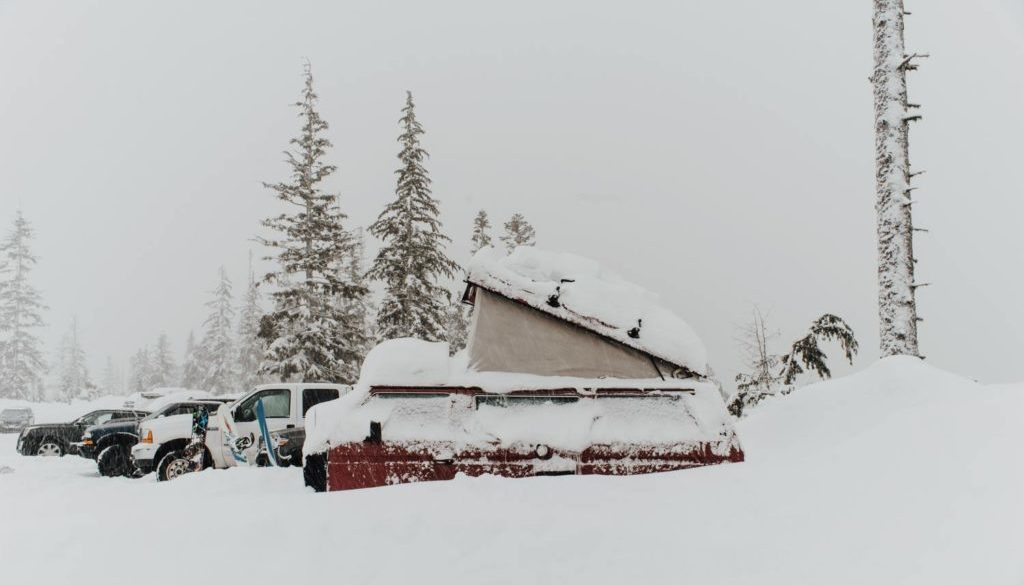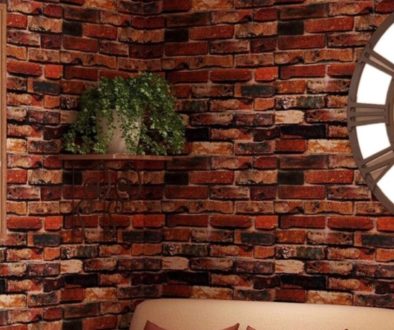5 Best Cargo Van Insulation Options
Comfort is key to thriving on the road, so whether you will be camping in warm or cold climates, you need to insulate your van. Cargo vans do not come insulated, so that the metal body is the only thing between you and the elements, so it makes your van a great oven in the summer and a freezer in the winter. Think about anytime your car has been sitting out in the hot sun all day; you don’t want your skin to touch that metal. If you do one thing to prepare your van for camping, besides throwing in shag carpet and a bed down, you need to add insulation.
The best way to insulate your camping van will involve a variety of materials, although you can make your van insulation process as involved as you like. Understanding how insulation and how heat flow works will help you choose the right type of insulation, because you will better understand the purpose of the materials you will be working with.
Insulation works by providing resistance for heat flow. Heat flow works in 3 ways: conduction, convection and radiation.
- Conduction is how heat moves from one object to another, like when your hot car seat burns the back of your legs.
- Convection is how heat moves through air or liquid, like how warm air rises and cooler more dense air falls towards the floor.
- Radiation is heat traveling in a straight line from an object, like how you warm yourself standing by a fire. Insulation acts as a barrier or a boundary for these types of heat flow. The better you insulate the more control you will have over the maintained temperature in your van.

R-Value: How well a material prevents heat flow is measured by an R-Value (the R stands for resistance). The higher the R-Value the more effective the insulation will be. R-Values are displayed at a certain value per thickness.
Best Overall Van Insulation
THINSULATE
R-Value 3.1 for 1 inch thickness | $2.25 per square foot (1 3/4″ thick) | $787.50 for 350 square feet

Thinsulate is a brand of insulation manufactured by 3M. It is a synthetic insulation that is hydrophobic, which means it is resistant to moisture and therefore resistant to mold and mildew. It was originally used in clothing; gloves, coats, boots, and other winter wear. It can be pricier than some other options, but it is worth it for the high R-Value, ease of installation, resistance to mildew, and it is also great for sound proofing your van.
Pros:
- Easy Insulation
- Can be used for walls, ceiling, floors and windows
- Hydrophobic; resistant to mold and mildew
- High R-Value for thickness
- Good for sound proofing
Cons:
- Expensive
Additional Supplies needed for installation:
Best Natural Van Insulation
Havelock Wool
R-Value 3.5 for 1 inch thickness | $1.20 per square foot (2″ thick) | $420.00 for 350 square feet

Havelock Wool is great option for insulation and by far the best natural option. It has a high R-Value, it is water/moisture resistant, and it easily fits into the nooks and crannies of your van. The only drawback to wool is that it can be difficult to install as you can’t use spray adhesive with it.
Not considering the ease of installation, wool would be our first choice, so consider it a close runner up to Thinsulate. As for the difficulties with insulation, you will need to get creative. There are plenty of example of people simply taping their insulation in place until they install their wall paneling, or weaving twine or fishing line over the wool like a web to hold it in place. It might be tricky but once you get it in place, it will serve you well, winter and summer.
Pros:
- Can be used for walls, ceiling, floors and windows
- Easy to stuff into nooks and crannies
- Hydrophobic; resistant to mold and mildew
- High R-Value for thickness
- Good for sound proofing
Cons:
- Difficult to install
Additional Supplies needed for installation:
Best Insulation for Floors
Polyiso Rigid Foam Board
R-Value 5 for 1 inch thickness | $1.53 per square foot (1″ thick) | $534 for 350 square feet

You might not realize it, but heat can be lost through the floor of your van. You will loose a little bit of height but you need to insulate your floor as well. In addition to providing heat flow resistance, insulating your van floor will level out the floor and make it more comfortable to walk on or kneel on if you have a low ceiling.
There are three types of rigid foam board insulation; EPS, Polyiso and XPS. The Polyiso foam board will give you the highest R-Value per ft. XPS is a close second but for roughly the same price, you should go with the top performing product, the polyiso foam board.
As you probably have noticed, the floor of your van is not flat and smooth, you will want to fill in the gaps with a malleable insulation like Thinsulate or wool and then put your polyiso rigid foam board insulation on top. You can secure it using foam board adhesive, so it is easy to install. To finish the look of your van, add plywood and vinyl on top for a nice finish.
Pros:
- Completely water proof
- High R-Value
- Easy to install
Cons:
- Not suitable for all surfaces
Additional Supplies needed for installation:
Best Insulation for Windows
EZ-Cool
R-Value 8 for 1/4 inch thickness | $0.84 per square foot (1/4″ thick) | $295.54 for 350 square feet

Don’t forget to insulate your windows! You will also want to make your windows lightproof, especially if you plan on doing any stealth camping, so insulating all your windows and windshield will solve a couple of problems. The best insulation for windows is Ez-Cool, which is a multi-layered synthetic foam insulation with reflective foil on either side. It is only a ¼ inch thick, but despite being thin, it has a great R-Value.
Use Ez-Cool to make window covers. Cut pieces of Ez-Cool out in the shape of each window. You can Thinsulate to the back (van facing side) of each cover for added insulation and then add fabric on top of that to dress it up. The Ez-Cool does have enough structure to it that if you cut the sections to be just slightly larger than each window, they should stay tucked into place. If they do not, you can always get magnetic clips that will hold it into place.
Pros:
- Great for insulating windows
- High R-Value for being very thin
- Reflective side helps keep radiant heat away
- Easy to install
- Cheap
Cons:
- R-Value diminishes in cold
- Not a great insulator for the whole van.
Additional Supplies needed for installation:
Best Budget Van Insulation: insulate your whole van for less than $100
Reflectix Double Reflective Insulation
R-Value 3.5 for 3/10″ thickness | $0.27 per square foot (3/10″ thick) | $108.44 for 400 square feet

Reflectix is your best option for a budget insulation. It is thin but flexible so it will fit into crevasses of your van. It is easy to install; you could use double sided tape, adhesive or even a heavy magnet will hold it to the van wall. It wont keep your van completely warm or cool, but it will take the edge off. If you are in a hurry to get some insulation in, reflectix is a fast and cheap option.
Pros:
- Cheap
- Easy to install
- Great for insulating windows
Cons:
- R-Value diminishes in cold
- Additional layers doesn’t add the same R-Value
- Adding layers is difficult to install
- Not good for sound proofing as it makes a crinkly foil sound as it heats up
Additional Supplies needed for installation:
Best Performing Insulation
Spray Foam
R-Value 6.2 for 1 inch thickness | $1.65 per square foot (1″ thick) | $577.20 for 350 square feet

Spray foam has a high R-Value and will fill every square inch of your van and will serve as your insulation for floor, ceiling and walls. It is resistant to mold and mildew and it will not settle, meaning you won’t have to reapply it after it dries.
We rated the Thinsulate above spray foam for two main reasons; ease of installation and level of permanence. Spray foam gets everywhere! It is very messy and it will take a great deal of planning before you spray to make sure that you do not cover anything you will need access to one day. It is also permanent, so if you do cover a wire bundle or a vent that you will one day need to fix or open, you will be cutting through insulation to do it.
It is also a very expensive option. The cost for applying a 1 inch layer to 350 square feet is about $577, however, you will likely be applying twice that thickness which will run you over $1000.
Pros:
- Highest R-Value
- Completely moisture proof
- Great for sound proofing
- Will not settle
Cons:
- Difficult, complicated and time consuming to install
- Improper install can bow the sides of your van
- Expensive
- Permanent and could be detrimental to doing repairs later on
Additional Supplies Needed for Installation:
F.A.Q.
Does R-Value Double if you add another layer of insulation?
It depends on the insulation. With most types of insulation, adding additional layers also adds air space in between each layer, so each additional layer would not add the same R-Value. With spray foam insulation, however, adding additional thickness, say another inch for two inches total, would double the R-Value for one inch of thickness.
Do you need to insulate a campervan?
You do not need to insulate a campervan, but keep in mind where you will be camping and what the climate might be like. Another factor to consider is how long you will be living in your van. Insulation will increase your comfort level over time.
Do I need to be careful of moisture absorbing insulation?
Yes. Moisture breeds mildew and mold which, prolonged exposure to, can be bad for your health and it can be detrimental to your van conversion. You might loose all your work to rot! Choose an insulation that is moisture resistant and be sure to seal everything up well.
What other materials will I need to install installation?
It depends on the type of installation. Below each type above there is a list of additional supplies you will need to install that particular type of installation.
Should I insulate my floor?
You can get away with throwing down a nice plush run in your van for a little while. If you plan to make vanlife a long term arrangement, than yes, you should insulate the floor of your van. In addition to preventing heat flow (in and out of your van), it will also make a big difference in sound proofing your van and will provide you with a much quieter ride.
How much does it cost to insulate your van?
For the best insulation job money can buy, plan on spending about $1000. You will likely be using multiple forms of insulation and that will also including final external paneling like plywood or vinyl.
You can, however, easily insulate your van on the low end and save yourself a few degrees with only a few hundred dollars.



